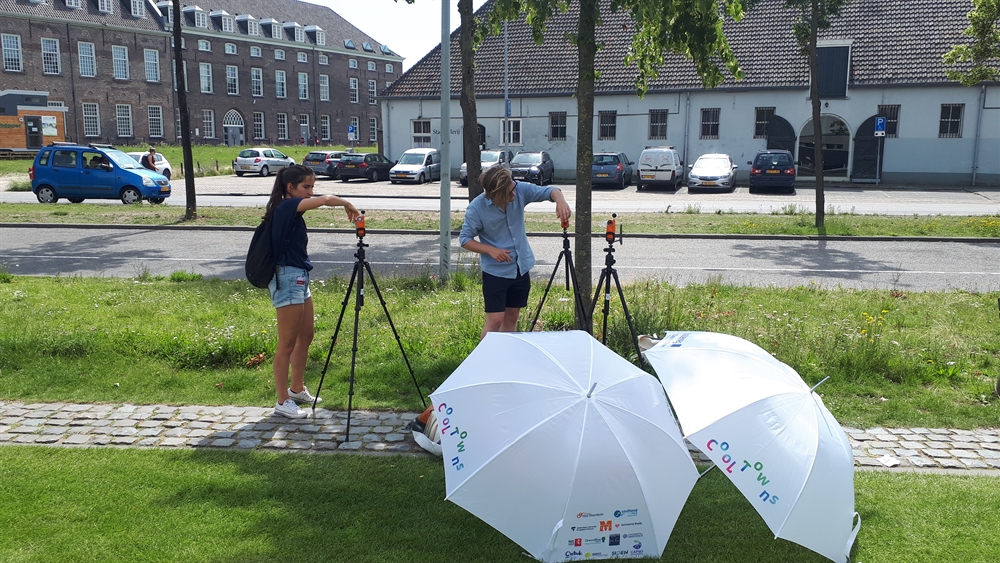Cool Towns developing tools for heat-proof cities in Europe
Climate change is resulting in warmer summers and more frequent heatwaves. In many cities, this is causing heat stress. The Cool Towns project involves collaboration between 13 European cities and regions aimed at reducing heat stress.

Why this project?
Many cities intend to adapt the living environment to reduce heat stress, yet they often lack essential information and tools. The Cool Towns project partners aim to remedy that. Based on measurements during the summer months, they are developing a heat stress model and a decision tool for municipalities. The heat stress model maps out heat in the city, and the decision tool enables municipalities to decide on measures to combat heat stress.
What does the project entail?
Cool Towns was rolled out in September 2018 and will run for approximately four years. The Amsterdam University of Applied Sciences has drawn up a measurement protocol. The cities of Amsterdam, Oostende, Breda, and Middelburg, and the province of Oost-Vlaanderen used this protocol to carry out measurements in July and August. The researchers will be using these measurements to field-test the heat stress model. Furthermore, the results will be used as input for the decision tool.
The project consists of two phases:
- During the first phase of the study, the Amsterdam UAS team will develop the heat stress model, which they will use to map out the heat in the city. They have completed a first version of the heat stress model, with which they have developed the first heat stress maps for Breda and Oostende. Subsequently, they will be making the first set of heat vulnerability maps and heat stress maps for the other partner cities. The heat stress model is expected to be ready by the end of 2019 – early 2020.
- During the second phase, the partners will be developing the decision tool. This will comprise several heat resilience measures featuring essential decision parameters, such as heat reduction, co-benefits, costs, and resources. The data for this tool will be generated by pilot projects to be carried out by the partners in seven different municipalities. These pilot projects enable the municipalities to test and showcase various measures to combat heat stress in public spaces.
Examples of pilot projects
In the purview of the decision tool, the seven municipalities have joined forces with Sioen Industries (BE) and GreenBlue Urban (UK) to explore the combinations of measures and locations to be used as pilot projects. For example, the city of Oostende is planning to convert an inner-city car park into a green oasis. The city of Breda aims to realise a water playground in the city centre. The province of Oost-Vlaanderen harbours plans for greening schoolyards by 2020, whilst the city of Middelburg will be greening the vicinity of the railway station.

Who is involved in the project?
The Cool Towns partners are the Amsterdam University of Applied Sciences (NL), the University of Greenwich (UK), the Université de Picardie (FR), the municipality of Middelburg (NL), the municipality of Breda (NL), the municipality of Oostende (BE), the municipality of Saint Omer (FR), the province of Oost-Vlaanderen (BE), Kent County Council (UK), GreenBlue Urban (UK), AUD Agency (FR), Sioen (BE), and CAPSO (FR). Research funding was provided by, inter alia, Interreg 2 Seas Mers Zeeën, the province of Noord-Holland, and the province of Zeeland.
